#CorkCityLibraries
Explore tagged Tumblr posts
Text
Sow... Let’s Grow! April 2025
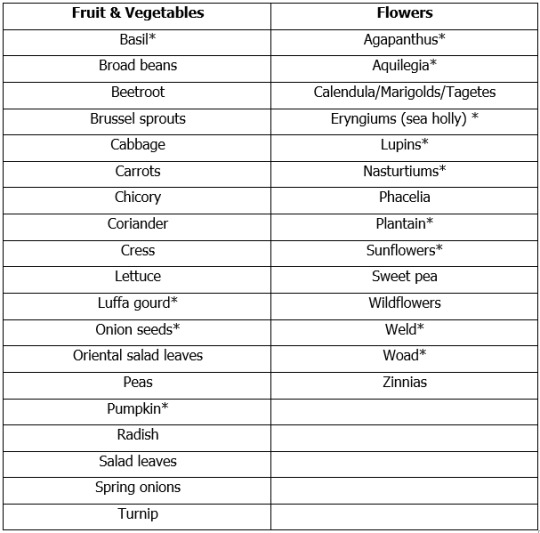
[Entries marked with an * need to be sown indoors or under cover first and then planted out.]
April is a fantastic month for the garden. I’ve lost count of the number of birds I’ve seen visiting our bird feeder and the buzzing of the bees is becoming an increasingly common sound. These are all signs that spring has well and truly arrived. Some of the seedlings I planted last month have started to grow, including my sweet peas, snap dragons and lettuce. The sweet peas have done so well that I’ve moved them outside into a lovely big pot where I've also planted lilies so that, as the sweet pea is fading in the autumn, the lilies should be in full bloom. Above is a non-exhaustive list of seeds that can be sown in April and below I’ll go through a couple that we have in stock in Hollyhill Library in a bit more detail.

Beetroot: these seeds love fertile soil so adding manure or compost prior to planting will give them the best chance of survival. Make sure the soil is free of clumps and weeds too. A beetroot seed is a cluster of up to five seeds so thinning the seedlings once they’ve germinated will definitely be necessary. Sow the seeds in rows 30 cm apart in drills 2 cm deep and if you can, feed them with a liquid feed at least once during the growing season. You can begin to harvest the beetroot once they are the size of golf balls, this can take between 8 – 10 weeks.
Radish: these seeds are ready to eat in a month, making them one of the quickest growing vegetables. Sow the seeds in rows 15 cm apart and 1 cm deep. Keep them watered and that’s it! You can also use radish tops in soup instead of chucking them in the bin.
Nasturtiums: these seeds are so easy to grow and produce such vibrant flowers that I would encourage even the most timid of growers to try them. Make sure the soil is free of lumps before you start. Sow the seeds around 1.5 cm deep and 10 cm apart and water well. Germination time is approximately 14 days. Once the plant has started flowering, deadhead to encourage more growth. Nasturtiums will self-seed so hopefully you will have wonderful displays of colour for years to come.
Zinnias: these flowers are originally from Mexico so make sure to find them a good sunny spot. Sow the seeds 10 – 15 cm apart and cover lightly with soil. They will flower from July to October and picking the flowers regularly will encourage new growth.
3 notes
·
View notes
Text

Children's Book Fest 2022
Poster promoting events and activities taking place throughout Cork City Library branches for Children's Book Fest 2022.
As the tagline for this year's festival was "A Celebration of Books & Stories..." I created a marching band tiger character against an autumnal backdrop.
A simplified version of this design was used on an accompanying brochure and website banner for @corkcitylibraries.
#illustration#character design#digital art#photoshop#drawing#ireland#graphic design#poster#kids#art#childrens book fest#kid lit art#cork city#libraries#CBF22#books#festival#reading#stories#autumn#halloween#children#cute
4 notes
·
View notes
Text
Cork Libraries October Events
October is a busy month for Cork City Libraries! It’s Halloween, Health Literacy Month and the Children’s Book Festival!

This year the Children’s Book Festival is taking place online, so check out our webpage for lots of content and videos from our panel of amazing authors. There’s creative writing exercises and workshops, how-to-make Harry Potter bookmarks, how-to-make your own zine, and lots more!
Cork City Children’s Book Festival

It’s Health Literacy month’s 20th anniversary, and it is more important than ever this year as the world struggles with the Covid 19 pandemic. The CorkCityLibraries tumblr article states that “the importance of Health Literacy is realised in its outcomes; the individual making healthy decisions and acting in a healthy way for the benefit of themselves and their wider community”. Read the article in full through the link below.
Health Literacy: What Is It?

Why not spend this Halloween curled up with a bag of Halloween sweets and a stack of suitably scary books from your library? As a librarian with a love of the horror genre (be it book, movie or video game), here are some of my own favourite horror books (in no particular order) for your consideration...
“Through the Woods” by Emily Carroll
“Misery” by Stephen King
“Let The Right One In” by John Ajvide Lindqvist
“Coraline” by Neil Gaiman
“The Spooks Apprentice” by Joseph Delaney
“Gyo” and “Uzumaki” by Junji Ito
“The Gashlycrumb Tinies” by Edward Gorey
“The Shadow Over Innsmouth” by H.P. Lovecraft
“The Promised Neverland” by Kaiu Shirai and Posuka Demizu
“Cirque du Freak” and “Lord Loss” by Darren Shan
2 notes
·
View notes
Photo
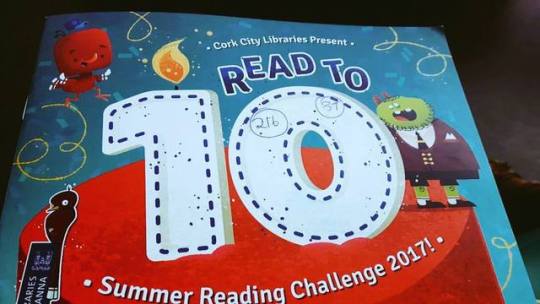
#corkcitylibraries #SummerReadingChallenge #keepingkidsreading
0 notes
Photo

RT @corkcitylibrary: https://t.co/wGKPHQmFMP 2PLAN22 http://twitter.com/2PLAN22/status/854070491010789379
https://t.co/wGKPHQmFMP
— Cork City Libraries (@corkcitylibrary) April 17, 2017
0 notes
Text
Spaghetti Bowl – Cónal Creedon
Book reviewed by David O’Brien, Cork City Librarian

This book made me smile and was a welcome companion on a recent journey when I had time to savour it. Spaghetti Bowl is quirky and enjoyable a collection of essays by well-known Cork author Cónal Creedon. The inspiration for each individual piece is very much a stand-alone exploration and yet this diverse collection of essays all come together – as a single experience that left me chuckling in parts; and experiencing no little nostalgia for a Cork of the past. He refers to the move to Cork from West Cork by his mother and father (his mother was from Beara and his father was from Inchigeelagh). His essays on Brara and Iveleary outline the ties that are so Irish, family, place and the wider community, in a volume that of work that resonates far beyond the inner-city streets of his native Cork, out into the countryside and beyond. As you read. Creedon’s world view is seen from the streets from downtown Cork City, – where his family has lived and traded for generations. It is very much tied to his own evolution as he treads the path of his life yet done with constant reference to thoughts and musings and the world around him.
His base he calls the ‘Spaghetti Bowl of Streets’. The essays in Spaghetti Bowl take the reader from Creedon’s early days playing football on Devonshire Street to his observations on Cork in the aftermath of covid 19. We learn of the great community spirit in the Spaghetti Bowl of Cork and of the warmth and memories of happy days spent with his uncles, aunts, and cousins and friends.
Dogeen is my favourite piece in this book and if you are a dog lover you will enjoy it – and it may well bring a lump to your throat.
A great read (especially if you can read it in a Cork accent!). Recommended.
2 notes
·
View notes
Text
Sow...Let's Grow
Come May the garden is bursting with life, my irises are in full bloom, my strawberries have just started to flower, my peas, sweet peas and Martock beans (readers of this blog may remember I was given these beans at a seed saving talk held in Hollyhill Library during Heritage Week last year) are all well on their way and one of my jobs for the weekend is to build them a trellis. The weather is fine, the days are long and at this time of year there is nothing I love more than pottering around my garden watching everything bask in the sunshine.
Here are all the seeds you can plant in May (and it just so happens we have them all in stock in Hollyhill Library!)

Enough that you could plant something new every day of May and still have seeds left over. I have planted my calendula seeds in amongst my garlic and onion bed as a companion plant. Companion planting is sowing two specific seeds next to each other because they each have properties that are mutually beneficial to each other. Calendula is a great one as it is not only extremely attractive to pollinators, but it also deters aphids and whitefly. Common crops that will benefit from calendula being planted near them include: tomatoes, beans, courgettes, and all brassicas and alliums.
To sow calendula seeds you can start them off indoors in a sunny window and plant them out once they are about 5cm tall or you can plant them straight outside if the risk of frost has passed. Use a good compost or well raked soil and cover the seeds with a thin layer, water well and you should be able to see your seeds growing in 1 – 2 weeks’ time. Calendula is an annual so it will only last the year, but they are also great self seeders.

A more in-depth exploration of companion planting can be found in Jill Billington’s Planting Companions, available to borrow from Hollyhill Library. The author talks about natural compatibility and the importance of understanding your garden climate, for example, how shaded it is, the acidity of the soil, when choosing what to plant in your garden. She focuses mainly on flowers and goes into a lot of detail about using height and space to your advantage but if veg is more your cup of tea then Jessica Walliser’s Plant Partners: science-based companion planting strategies for the vegetable garden is the one for you. This book really covers all the bases with chapters on weed management, support structures, pest management and pollination showing you how to really maximise the space you have and the plants you can grow. Working with your garden and understanding how the plants interact with each other would probably be described as holistic gardening today but the concept of listening to nature and learning from the environment around you has been around for hundreds of years.
Happy gardening 😊
3 notes
·
View notes
Text
Goad Plans of Cork City!

The dedicated Cork City Libraries Local History website, Cork Past and Present, has recently had an interesting addition made in the shape of Insurance plans for the commercial heart of the City. The wide selection of maps details the changing landscape and businesses that filled the city centre from 1897 to 1961!
Cork City Libraries hold copies of seventeen editions of the Goad plans for Cork City, from 1897 to 1961. These are held in five bindings in our Local Studies and Learning Department. The ‘key plan’ on the first sheet of each edition provides a graphic outline of areas represented in more detail on maps 2-16 of each edition. Under the key plan (in PDF form in these webpages), a selective index of streets, buildings, and firms is included. The scale of the detailed plans is one inch to forty feet (1:480) on the original paper copies. Fire insurance plans were first drawn up in the late eighteenth century to provide risk information to fire insurance underwriters.

Charles Edward Goad, born in Surrey in 1848, moved to Canada in 1869, where he became a renowned cartographer and railway engineer. The firm of Charles E. Goad was established in Montreal in 1875 and became the leading producer of fire insurance plans for 1,300 places in Canada, before he returned to Britain in 1885 to produce insurance plans for the commercial sections of more than 100 towns in Britain and Ireland, along with surveying places in other countries.
Fire insurance companies had an interest in preventing fires to insured properties, and firefighters (often private) needed detailed information regarding access to water, routes to building, room arrangements, locations of doors & windows, thickness of walls, information on construction materials, type of roof, locations of combustible materials, water-works system, etc. Charles Goad died in Toronto in 1910. Goad insurance plans now provide an excellent information source for historians, geographers, architects, environmentalists and genealogists.
2 notes
·
View notes
Text
Cork City Libraries Sustainability Blog | Sow…Let’s Grow!

I was fortunate enough to attend a gardening course at the end of June, with the intention that it would contribute to my work with the Hollyhill Seed Library and this blog. Although the day itself was wet and miserable, and the arrival of the promised sandwiches never materialised, I thoroughly enjoyed myself and my head was spinning with the amount of information that was being imparted upon us. The lady who was running the course, Aoife Munn, was a fountain of knowledge and I would highly recommend checking out one of her talks if she ever pops up in your area.
She initially spoke about the importance of pollinator plants. In a study conducted by the Botanical Society of Britain and Ireland it was found that our native plants have declined by 56% since the 1950s which is a terrifying statistic. Plants have evolved over millions of years to adapt to their surroundings, including their ability to attract pollinators specific to that area. Given that we have lost over half of our native plants it’s not a big jump to assume that our native bees and other pollinators must be really struggling in the changing landscape. Something we can do as gardeners to alleviate that struggle is to plant native pollinators. Sometimes you don’t even have to plant anything, if you just let a patch of land grow wild you will be amazed at what will grow there.

Plants such as dandelions, oxeye daisy, clover and knapweed will all appear in your garden given the space and the time. Foxglove, primrose, cornflowers, and marsh marigold are all native Irish plants and great pollinators too, so it’s a double win! A plant that she also suggested that I’d never considered before was the humble ivy. Ivy keeps its foliage all year round, it flowers when very little else does and its berries are a wonderful food for birds during the chilly winter months. Other fantastic pollinators include snowdrop, crocus, comfrey, wallflower, hellebores, and alliums.
Aoife also showed us how to make biodegradable pots for seedlings or for plants that need an extra bit of support indoors before they can be planted out. To make your own pot all you need is a couple of sheets of newspaper and a plastic bottle, a 250ml bottle is a perfect size. Fold the newspaper sheet in half horizontally, with the closed end towards you and the open end facing away. Put the plastic bottle at the start of the newspaper, making sure the open end is also facing the open end of the newspaper and roll the newspaper around the bottle. Stuff the paper into the opening of the bottle and then take the bottle out and put it back in, bottom end first so it can squash down the newspaper. This will degrade much faster than a toilet roll tube and repurposes items that would traditionally have ended up in the bin.

In other gardening news I ate my first radish this week and it was one that I had grown myself! I borrowed the seeds from the Hollyhill Seed Library, planted the seeds in the bottom of the pot that my peas were in and hey presto, a couple of weeks later I have lots of lovely crunchy little radishes. Another vegetable that is ready to eat is rainbow chard. Although not fully grown yet, the baby leaves are perfectly edible and pinching them out now gives the remaining leaves space to grow. Using my baby rainbow chard leaves and the radish I grew, I made a lovely peanut satay and it’s safe to say that nothing beats the taste of freshly grown veg!
2 notes
·
View notes
Text
Sow. . .Let’s Grow: March 2025
The 2025 growing season has begun and we are back! The daffodils are blooming, the birds are returning, and the days are getting longer – Spring has truly arrived. I have spent most of January and February curled up indoors staring wistfully out at the rain and wind as my pots are blown around. But I think (and I don’t want to tempt fate) that we are almost past the frosty mornings…regardless, now is the time to sow your seedlings indoors or in your greenhouse. This year I will be sowing Sweet Williams, Cineraria, Snapdragons, Basil, and Sweet Peas.

[Seeds for March]
Sweet Williams: Also known as Dianthus barbatus, these are a wonderfully colourful and fragrant flower, growing to around 45 cm tall. They can be sown indoors from January through to March. You do not need to cover the seeds with soil as they need light to germinate but do keep the soil moist. Germination takes 10 – 14 days and the seedlings can be planted out once the risk of frost has passed. Seeds can be biennial or perennial depending on what variety you have.
Cineraria ‘Silver Dust’: Also known as silver ragwort, this plant is mostly grown for its unusual silver foliage which can look incredibly striking in a space so full of green. Sow in seed trays using moist compost and leave on a sunny windowsill indoors. Germination can take between 10 – 21 days. As with nearly all seedlings, once the risk of frost has passed, plant out into the garden. I failed miserably with this plant last year, so fingers crossed it works for me this year!
Snapdragons: An instantly recognisable cottage garden classic, these beautiful flowers should be sown indoors in March in a seed tray, covered with a thin layer of soil and placed in a propagator or covered with a clear plastic bag. Plant out after the last frost and with a bit of love and luck they will flower all the way from June to October.
Basil: This plant can be grown indoors and outdoors as it originates from a Mediterranean climate. Sow in seed trays and place on a sunny windowsill or in a greenhouse. Germination takes around 14 days and can be planted out – you guessed it – after the last frost. Alternatively, you can keep the plant indoors and it will be just as happy. Remember to cut the growing tips off the plant as this will encourage outward growth rather than upward growth. You can start harvesting your basil once it is 25 cm tall.
Sweet peas: These can be planted directly into the soil but to give them a bit of head start I prefer to sow them indoors and then plant them out. The only thing with sweet peas it that they have long root and cannot be sown in a normal seed tray. So, you can either use the inner tube of a toilet roll or simply a deeper pot. Push the seed about 1 inch into the soil and cover, ensuring the soil stays moist. Germination is a speedy 7 days. Sweet peas are the hardiest of all the plants I’ve written about in this month’s blog so they could almost be planted out as soon as they have established roots. They can grow up to 2 metres tall so they will need a trellis or a support structure to grow around. Flowers from June to October.
0 notes
Text
So...Let's Grow: December 2024
December for many people is the busiest month of the year and gardeners are no different. It’s cold, it’s wet and nobody really wants to be outside, but a Christmas dinner made with vegetables and herbs you have grown yourself makes it all worth it. But I know that not everyone is as enthusiastic to be out pruning and digging in the pouring rain, so in this blog I’ll recommend some books with nature inspired activities that can be created from the comfort of your kitchen table, some cookbooks to incorporate home grown produce, and a couple of gardening books for those of us who are a little bit mad!

Wreaths and Crafts
Christmas ornaments: 27 charming decorations to make, from wreaths and garlands to baubles and table centerpieces by Chris Myers, Catherine Woram, and Clare Youngs. This book covers a range of festive decorations made from reused and recycled materials found around your home. They avoid using environmentally harmful products like glitter and try to include as little plastic as possible. Some of my favourites include gingerbread salt dough shapes on p31, the dogwood wreath on p60, and the crab apple wreath on p71.
Beautiful wreaths & garlands: 35 projects to decorate your home for all seasons & occasions by Catherine Woram. This book covers wreaths for all year round but has a special chapter for holidays and special occasions. There is a gorgeous leaf and berry Christmas wreath on p105 and a beautiful heart fairy light wreath on p112.
The homemade year: things to make, do and eat at home to welcome every season by Lily Higgins. This book again covers all year round and has a chapter for each month of the year. The December chapter contains wonderful projects such as potpourri, orange pomander, paper snowflakes and a leaf wreath. The winter chapter starts on page 248.
Cooking
Nigella Christmas: food, family, friends, festivities by Nigella Lawson. As with any Nigella cookbook you know you are in for a treat. A firm believer in eating as a social occasion, she has recipes to cover an entire Christmas dinner and Christmas brunch for up to 8 people! On top of this she has recipes for cocktails, canapés and sauces ensuring there is something for everyone of every age and preference.
A very vegan Christmas: plant-based recipes for celebrating in style by Sam Dixon. Don’t let the word ‘vegan’ scare you off, this book is packed full of exciting vegetable-based recipes perfect for people who are tired of the same Christmas turkey every year. The recipes on p55 for a mushroom wellington, p75 for maple & pecan stove-top carrots, and p131 for orange chocolate chip shortbread particularly caught my eye!
Neven Maguire's perfect Irish Christmas by Neven Maguire. This book not only covers the big Christmas dinner but the entire festive season with recipes for all those leftovers, St Stephen’s Day suppers, and New Year’s Eve nibbles. As the head chef and proprietor of MacNean House and Restaurant, you know you’re in good hands with Neven.
Gardening
Your gardening year: how to get the best from your garden, every month of the year, 2023 by Alice Horne. Although it might be last year’s edition, this book is still one I would highly recommend to any gardener. It goes through what to plant, what to sow, what to harvest, and what needs to be done in the garden on a month-by-month basis. Even if you are not knee-deep in mud in December it’s always a good idea to plan and prepare what you are going to do once the weather breaks.
Four-season food gardening: how to grow vegetables, fruits, and herbs year-round by Misilla dela Llana. This book explains how you can have freshly grown produce all year round, yes even during the winter months. By extending the growing season using cold frames or greenhouses and planting perennial fruits and vegetables such as asparagus, artichoke, kale, and rhubarb you can utilise the space you have and keep busy all throughout the year.
Happy Christmas and happy growing!
1 note
·
View note
Text
Sow…Let’s Grow: October 2024
The heady days of summer are long behind us at this stage, but the garden still finds ways to put on a show. As I walk to work, I see the last act of nasturtiums, dahlias, chamomile, anemones, cosmos and chrysanthemums giving a vibrant display of reds and yellows to compliment the falling leaves of autumn. Although the days are getting shorter and wetter, there is nothing that will deter a hardy gardener and there are still plenty of jobs to do in the garden. Here I have outlined four of them.
Collect seeds from hardy perennials, such as Astrantia, achillea and red valerian.
To collect seeds from Astrantia you will need: scissors and brown paper bags. Once the flowers have turned brown put the paper bag over the flower head to ensure no seeds are lost and snip the stem. Give it a good shake and all the seeds should fall to the bottom of the bag ready to be planted. Astrantia’s can be sown now as they need the cold of winter to germinate. Using seed trays, fill them with soil or potting compost and sprinkle the seeds on top and cover with vermiculite or horticultural grit and press down gently. The trays can then be overwintered and planted in the garden next spring. Alternatively, if you want to store these until next spring and plant them then, put them in the fridge a month before you intend to use them, and this should mimic the cold of winter.
Collect leaves for leaf mould or compost.
Rake up fallen leaves from lawns, borders, driveways and paths, and store in a leaf mould bin to rot down into leaf mould or just chuck onto your compost heap. Adding leaves back into your soil in whatever shape or form you choose is hugely advantageous because they contain minerals like magnesium and phosphorus that replace those lost during the growing season. They are also free!
Sow microgreens for nutrient-rich pickings in just a few weeks.

Microgreens can be grown all year round, in any container you can get your hands on, on any available windowsill. Fill your container with soil or potting compost and make a small drill in the middle about 1cm deep. Sprinkle the seeds as evenly as you can in the drill and cover with soil. Lightly mist using a spray bottle as opposed to a watering can, the seeds are quite small, so you don’t want them to be washed away. Ensure the seeds don’t dry out and you should be able to harvest your microgreen in under two weeks’ time. Keep sowing regularly and you will be able to eat fresh greens all winter long. For more information on microgreen why not check out ‘Sprouts, Shoots and Microgreens: Tiny Plants to Grow and Eat in Your Home Kitchen’ by Lina Wallentinson, available to borrow from your local library.
Plant garlic cloves.
Garlic needs a good cold snap to properly develop so now is a good time for planting. Choose a sunny spot with good drainage, this is important as the cloves will rot if they become waterlogged. Give your soil a good rake to break up all the lumps and add some compost. Push the garlic into the soil flat end first with the pointy end towards the sky and cover with around 5cm of soil. Keep around 15cm between each garlic clove to ensure each one has enough space to grow and that’s it! Keep the space free of weeds and by June next year you should have a wonderful garlic harvest.
1 note
·
View note
Text
Sow…Let’s Grow: July 2024
In July the garden is absolutely teeming with life. My housemates and I built a birdbox together and created a small shelf where we can leave food and watch the birds from the kitchen window. So far, we have seen ravens, blackbirds, thrushes, and a most inquisitive robin. My peas and beans are producing fruit like no tomorrow, and we had an interesting visit from a little insect visitor. One of my coworkers is single handedly supplying me with courgettes and I have made many soups and cakes and courgette fritters with these plentiful little vegetables.

Jobs for July:
1) July is the best time to pick lavender. Choose to harvest in the middle of the day to ensure that all the morning dew has evaporated. Cut the lavender stems at the base, just where the branch leaves become stems and leave to dry in a cool dark space (although others leave it out to dry in the open to enjoy the smell). A cloth or paper bag works best as the flowers will shed through the drying process. It takes 3 – 4 weeks for the lavender to dry completely and retains it fragrance for over a year afterwards.

2) Watch out for pests such as the lily beetle. I was out admiring the garden the other day and came across some odd little gooey green blobs on the underside of my lily leaves. I removed them immediately because although I did not know what they were, it was almost bound to be a pest! Several days later and I spy a bright red beetle sunning itself amongst the lilies and after a quick internet search I came to the conclusion that it was Lilioceris Lilii a beetle that can decimate members of the Lilium and Fritillaria families. It had flown away before I could get rid of it, but I haven’t seen it since. If you have seen this bright little beetle in your garden, spraying the affected plant with sunflower oil ought to do the trick.

3) Water peas and beans regularly. They produce multitudes of fruit over the growing period and because of this they are thirsty little plants. Keep them moist and feed them if you are so inclined, I feed mine whenever I remember I have a bottle of liquid tomato feed under the sink!

4) Now is a good time to take tender perennial cuttings like fuchsia. I have taken cuttings from two varieties of fuchsia this year Magellanica Alba and Genii, the former having lovely pale pink flowers and the latter having bright, vibrant green leaves. To start, cut several stems with as little flower buds as possible, about 3 – 4 inches. Fill a pot with good compost or fine soil and pop the cuttings in. Water well and place a plastic bag over the top of the pot and fit an elastic band round so that it won’t fall off. After a couple of weeks each of these cuttings will have put down roots and will be ready to be potted on, each one a new baby fuchsia bush.
1 note
·
View note
Text
Sow…Let’s Grow
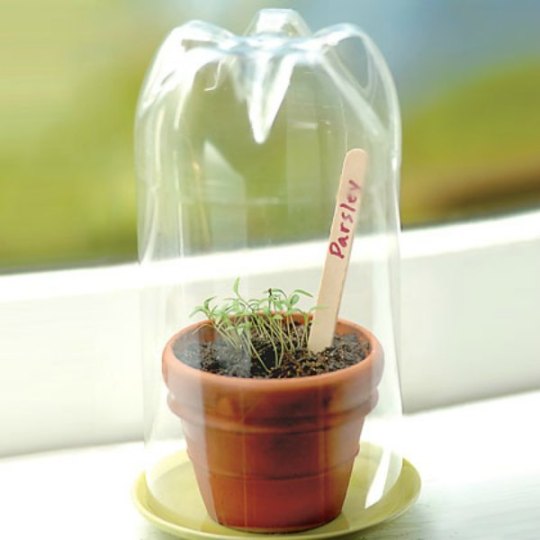
There aren’t enough hours in the day for all the jobs that need to be done in March.
Sunday was my only free day this week and I was determined to get out in the garden to plant some seeds but lo and behold it did not stop raining all day long and so I used the time to go through my seed collection and get all my March sowing seeds ready to go.
Seeds that can be planted in March:
Basil Agapanthus
Broad beans Aquilegia
Carrots Calendula
Coriander Eryngiums
Cress Lupins
Lettuce Nasturtiums
Peas Phacelia
Radishes Sunflowers
Spring onions Sweetpeas
Turnips Wildflowers
Last year I grew basil, carrots, lettuce, peas, and wildflowers. When sowing the carrots and lettuce I chose pots that were much too small and my crop at the end was only big enough to feed a family of mice! The basil, peas and wildflowers, however, did much better. The smell and taste of home grown veg is so satisfying; the fresh aroma of basil could almost convince you that you were living in Southern Italy (almost) and I’m sure I’ve waxed lyrical about the experience of eating freshly picked peas before, but it’s certainly worth mentioning again. If you want to try your hand at growing any of these, why not drop by to Hollyhill Library and have a look through our free Seed Library, we have all the above-mentioned seeds in stock. Members of the library can borrow up to four packets of seeds and groups up to 8 packets at a time, in return all we ask is that when the plant has finished growing, to return a portion of its seed to the library at harvest time. No matter how small the portion every little bit will help to keep this wonderful service going.
This year I’m also going to try and grow coriander and calendula, with hopefully a better result than my carrots and lettuce! Coriander likes a fine and fertile soil so remove all the clumps of earth and stones beforehand. They also have a fairly long root so make sure your pot is over 25cm deep. Scatter the seeds over the top of the soil, 5 to 10 per pot, cover with soil and water well. It will take about 3 weeks to germinate, you can sow coriander all the way through until September, to create a continuous crop.
Calendula is a great starting point for novice gardeners as it requires very little attention and is amazingly easy to grow. Simply pop the seeds exactly where you want them to grow in the garden, they do not need to be grown indoors first or in a greenhouse, and water well. They will flower all year round if we have a mild winter and the flowers are entirely edible. They also make great companion plants in vegetable gardens to attract pollinators and increase the yield of your crops. An all-round winner in my book!
Talking to my mother, another enthusiastic gardener, I was lamenting the fact that I do not have a greenhouse to start my seedlings off in and here is the ingenious solution she came up with – recycle plastic bottles! By cutting them in half and placing the top over a plant pot you are essentially creating a tiny greenhouse, the heat gets trapped under the plastic providing a much better temperature for seeds to germinate and when the seedlings start to appear, transpiration will create droplets of water on the inside of the bottle meaning the seeds water themselves.
Happy gardening!
0 notes
Text
Cork City Libraries Sustainability Blog | Sow…Let’s Grow!
December is the busiest month of the year for many people, from the stress of Christmas shopping to the excitement of finishing school for the little ones, and the all-important winter exams for those in secondary school or college – the garden is the last thought on anyone’s mind...or is it? The garden doesn’t just stop at the front door you know. In this blog I’ve hand-picked some books that we have in stock here in Hollyhill Library that can complement your gardening from how to make Christmas wreaths to what herbs perfectly accompany the Christmas day roast.

Beautiful Wreaths & Garlands: 35 Projects to Decorate your Home for all Seasons & Occasions by Catherine Woram contains pages of stunning ideas on how to bring all that wonderful winter foliage into your indoor space. Using materials that can be found in almost every garden, she shows you how to create beautiful Christmas wreaths that can highlight your fabulous gardening success.
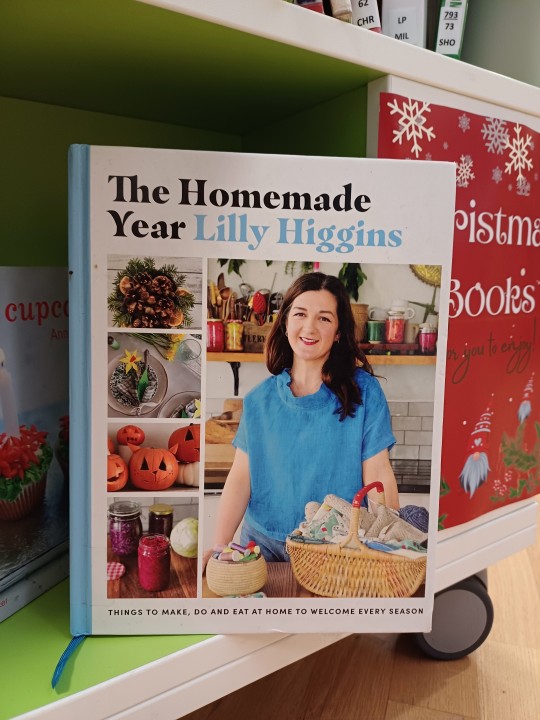
The Homemade Year by Lily Higgins is a wonderful read that I would recommend at any time of the year. She has divided her book by the seasons and has lots of gorgeous recipes and projects especially suited to each one. Winter starts on page 247 and the very first project is a stunning leaf wreath using dried leaves and herbs from the garden. This wreath is slightly less showy than the one in the previous book and would be perfect for those trying to incorporate a little bit of the Danish hygge tradition into their Christmas. On page 255 is a how-to for a facial steam using chamomile and rosemary which can ease congestion – especially handy at this time of year! And on page 289, one of my favourite Christmas activities, instructions for an orange pomander. Now I know that neither oranges nor cloves are particularly common plants to see growing in an Irish garden, but I love this one all the same and for less than the price of cup of coffee, your house can smell like Christmas for weeks. It is a lovely activity to do with your family, or whomever you choose to spend the holidays with. In the picture below you can see the pomanders my housemates and I made together.

Ultimate Christmas: The essential Recipes and Festive Crafts for the Perfect Christmas published by Paragon Books Ltd has lots of festive recipes that you can use to utilise your fruit and veg harvest. Regardless of whether you’re growing to feed a family of six or just have some herbs on your windowsill, this book has recipes that cater to everyone. Potato and parsnip rosti with smoked salmon, sour cream and chives on page 83 is a delicious recipe which uses common veg you may have grown yourself. No matter how small your gardening endeavours may be, there is no doubt that home grown produce adds just a little bit extra to any dish you desire to make. This book also has a small section in the back dedicated to Christmas crafts and here we find another wreath design, this one uses holly leaves which can be found almost anywhere – I pass several bushes on my walk to work every morning!
A Very Vegan Christmas: Plant-Based Recipes for Celebrating in Style by Sam Dixon is all about those plants. This book may be marketed towards vegans but anyone who believes veg deserves a starring role on the table, should most certainly give it a read. I’ve already leafed through this one and I’ll share with you some of my favourites. Maple & pecan stove-top carrots uses the thyme I’ve grown, and I’ll probably throw in some rosemary as well, I feel they really must be used together. Mushroom and chestnut stuffing also uses a host of herbs, and this will absolutely be on my dinner table come Christmas day. Roast butternut squash curry for those in-between days where you’re not quite sure if you can eat another charcuterie board, the recipe also calls for spinach and I’m going to use my rainbow chard instead, the colour will look just stunning.
Happy Christmas everyone from Hollyhill Library!
0 notes
Text
Cork City Libraries visits Sofia with the ADELE Project!
Nestled in between the cool winds of the Black Sea and the Danube River, at the foot of the Vitosha mountain, lies the city of Sofia. It was here, in the capital of Bulgaria, that the third ADELE LTTA (Learning Teaching Training Activity week) took place. Librarians from all over Europe congregated last September to share their experiences: the challenges and benefits of their work as librarians as they all strive to make each of their library’s sites of possibility, imagination, and education. The focus of the week was on Digital Services and Literacy – something which the ADELE tool is vested in.

The ADELE tool is a webtool that aims to show librarians and those working in non-formal education where the strengths and weaknesses of their integrated digital technologies lie. Both library professionals and patrons can access the tool online, answer questions pertaining to their local branch, and receive indication as to how well their branch and digital services are geared towards the future. The tool is fully customisable, thus allowing executive librarians to tailor the tool to their specific branch.

As a participant in the EU funded ADELE Project, we were invited to participate in this third edition of a series of LTTAs. This was hosted by the Global Libraries – Bulgarian Foundation who were exceptional hosts who made sure that all participants were privy to the country’s intellectual, cultural, and literary delights. Nineteen representatives from Ireland, Norway, Italy, Germany, Sweden, and Slovenia spent a week exchanging ideas, giving, and listening to presentations, and experiencing different European cultures firsthand.
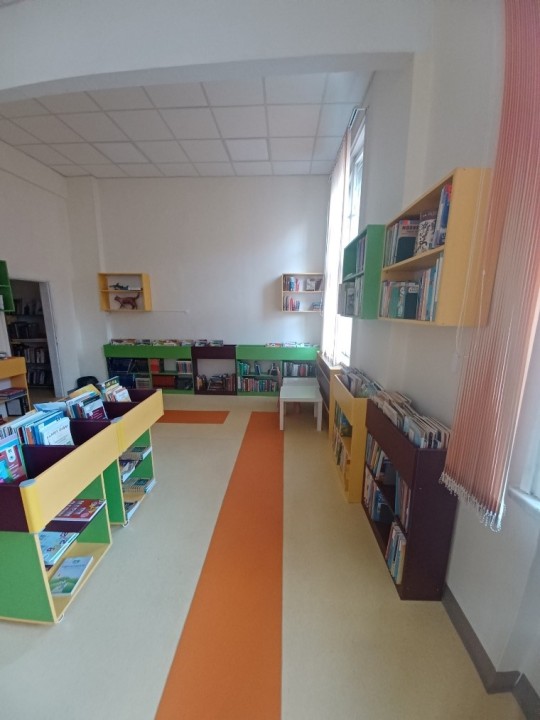
Being a part of an Erasmus+ funded partnership, a key aspect of the trip was in cultural exchange. Participants of the LTTA were encouraged to experience and learn about our host country. Our colleagues in the Bulgarian Library service spoke at length both in formal presentations and casual conversations about their work: the challenges, benefits, and problems that come part and parcel of work in a library system. At the end of our cultural and learning exchange in the beautiful city of Sofia, it was time for the participants of the third ADELE LTTA to say; “au revoir”, “ciao”, “auf wiedersehen” and “see you anon” to each other until the next time!
0 notes